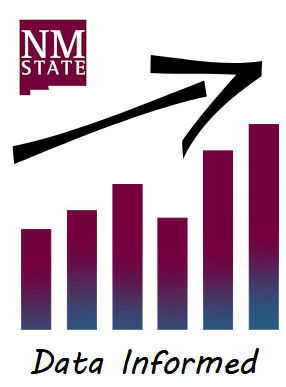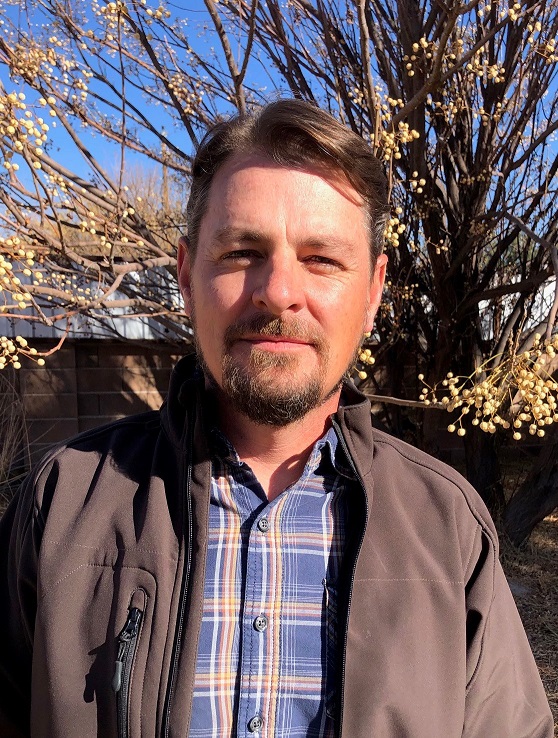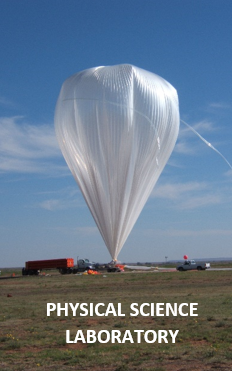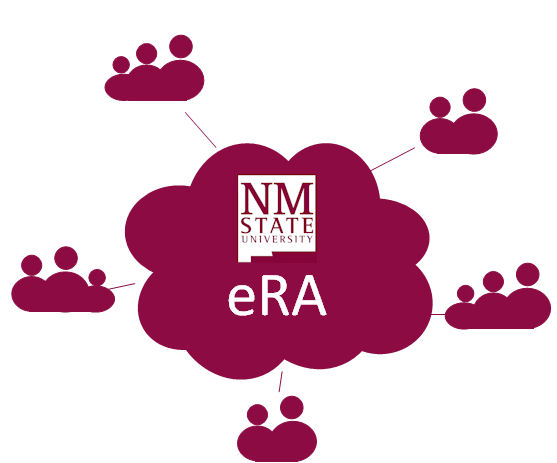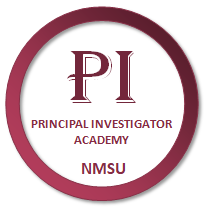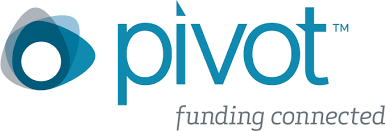 |
|
Becoming a Data Informed University is not Easy: Hence “Scorecard” to “Dashboard”, “Productivity Index” to “Margin Contribution Index”By Dr. Carol Parker, Provost and Senior Vice President for Academic Affairs and Dr. Luis Cifuentes, Vice President for Research and Dean of Graduate School
– Charles Babbage, mathematician, engineer, inventor, and philosopher NMSU is committed to becoming a data informed university. To paraphrase The Data Scientist article, NMSU will be data-informed when its units (divisions, colleges, departments, centers and institutes):
Admittedly, NMSU is not there yet; we have far to go. Many other universities do as well. The challenge before us is that being data-informed is only the beginning. It is the first step to becoming a data-driven university and, finally, a data-centric university.
Why does NMSU need to be on the road from a data-informed university to a data-centric university? LEADS 2025 strategic plan compels NMSU to develop appropriate and meaningful Key Performance Indexes (KPIs) and metrics that are used to determine if the goals and objectives are being met. KPIs and metrics provide insight into areas of our work and processes that might benefit from improvement. KPIs and metrics also provide baselines by which to determine whether our improvement efforts were successful.
To build this type of environment at NMSU requires as many different metrics as there are different aspects of our mission. Conversations with the various units that make up the NMSU System that will define the KPIs and metrics used for various purposes are well underway.
The University leadership (central administration) will need metrics related to, but different from, the metrics the division, college, department, center and institute leadership will need. Given the responsibility that the central administration bears to ensure stewardship of our state, tuition, and fee revenue, one of its metrics must be the fiscal health of NMSU’s units. Tuition, fees, funding for research and outreach, endowments, etc. are all critical to generating additional revenue (i.e., a margin) that can be used to sustain our mission. At a high-level, one way to measure this is monitor which of its units generate revenue above and beyond what it receives from the state and tuition and fees. As detailed by William F. Massey in Reengineering the University, margins (revenues minus costs) are essential to meeting the mission of an institution like NMSU, in particular: … to serve the diverse needs of the state through comprehensive programs of education, research, extension and outreach, and public service. As the state’s land-grant and space-grant university, and as a Hispanic-Serving Institution, NMSU fosters learning, inquiry, diversity and inclusion, social mobility, and service to the broader community.
It takes more than luck to create a margin, it takes hard work, strategic plans, and data. Ultimately, chancellor, president and provost are responsible for generating a margin sufficient to meet NMSU’s mission. University leadership (vice presidents and deans) are responsible for aligning resources (revenue and positions) with efforts to improve outcomes and achieve the LEADS 2025 goals. This ultimately requires changing the way we develop our annual budget, and creating incentives and rewards for colleges and divisions to support these efforts, e.g., merit-based compensation increase guidelines. The ongoing Budget Realignment Initiative is part of these efforts, but the process improvements we will need to make to achieve these goals are still nascent and in need of data.
In turn, deans and department heads are primarily responsible for understanding and analyzing their data in order to inform and set future goals for their faculty and staff based on what can strategically be achieved, particularly with respect to the mission of teaching and learning, research, scholarship and creative activity, and service and outreach. They also recommend and shape appropriate KPIs and metrics for those strategies. Finally, because we are publicly funded and we strive to keep tuition and fee costs as low as possible, they will also need to know how their unique department(s) contribute to NMSU’s margin (positive or negative) and what can be done to improve their margin(s).
Being a data-informed university does not change the mission of a university. Therefore, nothing fundamentally changes about the evaluation of faculty, the elements it covers, and who administers it. For example, faculty will continue to be assessed on their teaching, research/scholarship/creative works, outreach/extension, and service, and their department heads and deans will continue to administer the annual evaluations. Instead, data informs work assignments or workload allocation changes made by department heads and approved by deans. The annual goal setting process will begin to be informed by the data we now have about previous outcomes. The Dashboard is an example of this. It provides University leadership and division, college, department, center and institute leadership a shared tool for future goal setting discussions.
The concepts in the paragraph above are important and they bear restating. To put it another way, the central administration is not interested in doing the jobs of the deans, directors and department heads; it we will not be using data to tell unit leaders what to do. Instead, we will use data – primarily the Dashboard and the Margin Contribution Index – to provide indications that the unit leaders, and the faculty and staff who work with them, are doing their jobs well, and whether their units are fully living up to their potential to contribute to the mission, and to hopefully become stronger and not weaker over time. The myriad other data that is available is best used directly by the unit leaderships to inform individual unit strategies and responses.
Successful data-informed universities learn effective data storytelling, which is a structured approach for communicating insights gleaned from data. A compelling tale with trusted data can create a data story that influences and drives change. As noted in 6 Rules of Great Storytelling (As Told by Pixar), “[e]ffective storytelling involves a deep understanding of human emotions, motivations, and psychology in order to truly move an audience.” Hence the need for use of appropriate language and descriptors. Often, it takes dialogue to get there. But we have and strive to continue doing so as is demonstrated by changing “scorecard” to the less judgmental “dashboard,” and “productivity index” to the more accurate “margin contribution index” (thank you to the many who have opined about the shortcomings of the labels initially proposed).
We are on a long and winding road to make us data-informed university. We ask for your patience, understanding, and willingness to help make this happen. But together we will reach our destination! |
|
Dr. Tanner Schaub Leading NMSU's Research Cores ProgramBy Hamid Mansouri Rad, Senior Proposal Development Specialist, RAS
NMSU's Research Professor Tanner Schaub is leading the new Research Cores Program (RCP) administratively under the Office of the Vice President for Research and Dean of Graduate School (OVPRGS). This is an initiative that will establish a framework for the management and development of key research core facilities for use by research teams across campus and by industrial and academic partners. With a charter to enable NMSU faculty research, the RCP will strengthen NMSU research infrastructure and grant applications and will provide a locus for interdisciplinary collaboration. The RCP will operate with significant input from a faculty advisory board and will engage researchers to understand how best to serve the NMSU community. “The goal of the RCP program is to help faculty researchers be researchers," states Dr. Schaub. "Our faculty need access to excellent capabilities and instrumentation, and those resources need tools that reduce the administrative burden that comes with maintaining an active user base. We have to create scenarios where our faculty have both the technology and the mental space to engage their research.” The Research Cores Program will provide access to instrumentation and expertise that are not always available or sustainable by individual research laboratories. The founding laboratories of the RCP program are the Chemical Analysis and Instrumentation Laboratory (CAIL) and the Microscopic Imaging Core Suite (MICS), with more in development. “A big part of this effort will be to work with teams that pursue large interdisciplinary grant opportunities for infrastructure and programmatic funding. If you Google search any major university name followed by the word “cores”, you will find that core programs are enormous components of the research enterprise at all major institutions. I am excited to be part of growing this idea at NMSU.” Dr. Schaub has been an NMSU researcher for twelve years, most recently as a Research Professor and the director of both the CAIL laboratory and the Center for Animal Health and Food Safety, within the NMSU College of ACES. Prior to joining NMSU, Dr. Schaub was an assistant Scholar/Scientist at the National High Magnetic Field Laboratory. He earned his doctoral degree in Analytical Chemistry from Florida State University and his bachelor’s degree in chemistry from NMSU. “I have been extremely fortunate to have led the Center for the past years and the excellent people in that group helped me more than they know. I believe that the things I learned from them will help bring the RCP vision to fruition, it is going to be great.”
Dr. Schaub can be reached at tschaub@nmsu.edu. |
Dr. Tanner Schuab, Director of
|
PSL-USRA Team Competes for Major NASA Balloon ProgramBy Hamid Mansouri Rad, Senior Proposal Development Specialist, RAS
The NMSU Physical Science Laboratory (PSL) has teamed with Universities Space Research Association (USRA) on a proposal to the National Aeronautics and Space Administration (NASA) Balloon Operations Follow-on Contract (NBOC) II solicitation. This contract is to provide for the operation and maintenance of the Columbia Scientific Balloon Facility (CSBF) and overall management of the launch and operations, mission and engineering services, and potential hardware development to support the NASA Balloon Program. "The NBOC proposal submission represents about two years of significant coordination and collaboration within the University," remarks Alisha Giron, Assistant Vice President for Research. "The preparation required expertise from multiple central offices and regular, frequent communication among NMSU’s NBOC leadership team."
CSBF is a Government-owned facility located in Palestine, Texas, with a permanent balloon staging facility at Fort Sumner, New Mexico. PSL has more than 25 years experience supporting scientific balloon development and operations all over the world and will be providing engineering and technical expertise to NASA. This contract will have core requirements and an Indefinite Delivery Indefinite Quantity requirement with the ability to issue task orders for new equipment and support efforts. "We submitted a highly competitive proposal, kudos to the staff of the OVPRGS and PSL," states Dr. Luis Cifuentes, Vice President for Research and Dean of Graduate School. "NMSU looks forward to supporting NASA once again on scientific ballooning." The award selection is expected in the summer and contract start in October 2021.
For more information, please contact Henry Cathey, Director of PSL's Aerospace Division, at hcathey@psl.nmsu.edu.
|
|
Engaging with Federal Agencies and Congress: NMSU Collaboration with Lewis-Burke Associates LLCBy Alisha Giron, Assistant Vice President for Research
The OVPRGS continues to coordinate with the Office of Government Relations (OGR) to identify, invest in, and disseminate resources and opportunities to enhance NMSU’s federal impact, including positioning for federal funding, advocating for federal research programs and infrastructure, and increasing faculty interface with federal agencies through activities like the PI Academy. Together with Lewis-Burke Associates LLC (Lewis-Burke), NMSU’s Washington, D.C.-based federal government relations and lobbying firm, OVPRGS seeks opportunities to advance the University’s strategic research and federal policy goals by providing resources to individual faculty, centers and colleges, and University-wide efforts, especially as we navigate the impacts and challenges posed by the COVID-19 pandemic. |
|
OVPRGS Pursues Electronic Research Administration SystemBy Alisha Giron, Assistant Vice President for Research |
|
OVPRGS Moved to Cloud in 2020By Phillip De Leon, Associate Vice President for Research
Beginning in December 2018, the OVPRGS began an overhaul of its IT infrastructure including email routing, file systems, intra-office communications, and website. Initial work began with development of a new research website, led by Ed Zenisek and Jaycie Nesbit, using the Cascade development platform. In addition to a new navigation system and content, we consolidated six additional research support sites into the new site. Although underway at the time, the shutdown due to the pandemic accelerated OVPRGS' shift away from locally-stored files and on-site Exchange file servers to the combination of OneDrive (individual files) and SharePoint (group files). During the week of the shutdown, led by Alisha Giron and Andrew Weschler, over 20 staff migrated files from their desktop PCs to OneDrive and led by Abel Sanchez and Ed Zenisek, four exchange servers with 500+ GB of files were migrated to SharePoint (SP). Once work-from-home was underway, staff were able to easily access both individual and group files from the device(s) of their choice. This approach has allowed our unit's file systems to maintain synchronization, version control, and backup.
During this same week, OVPRGS trained staff on using Microsoft Teams as our intra-office messaging and conference call platform. Like most NMSU units, we continue to use MS Teams in our day-to-day operations and to date have built out over 15 Teams within our unit supported by SP infrastructure underneath. As our IT operations settled in the fall, we investigated "standard" SP practices which allow better organization and scalability. Ed Zenisek reworked our SP to a more sophisticated Research and Creativity "hub" with several unit sub-sites connected in a "hub and spoke" architecture to better support our file systems and group interactions, Teams operations, and development of a new Intranet system. The latter is expected to be released this spring as we redirect content, intended only for NMSU faculty and staff, inward from the external-facing website. Led by Steve Barkes and Kyle Purcell (ICT), OVPRGS consolidated numerous "service emails" to two addresses, {ovpr, ras}@nmsu.edu and developed a rules-based routing system to better serve the research community. Finally, led by Steve Barkes and Greg Cooper, our remaining servers within Anderson Hall which host systems such as ARGIS, are in the process of moving to ICT server infrastructure or third-party cloud solutions. As our ability to serve the research community and graduate students hinged on IT, we are grateful for OVPRGS IT group and NMSU ICT and their hard work and outstanding support. |
|
NMSU Virtual PI Academy Set and Ready to Spring into the SemesterBy Cindy Ramirez, Proposal Development Specialist, RAS
The first spring semester session will be on Tuesday, January 19th from 2:00 – 3:00 pm via Zoom. The session will be presented by Dr. Rachel Boren, Director of the Southwest Outreach Academic Research (SOAR) Evaluation & Policy Center. Discussion on logic models, program evaluation in grants, and some tips will be presented. |
|
Pivot Funding Opportunity Database
This is a reminder that in order to assist NMSU faculty and staff in locating external funding opportunities, the OVPRGS has purchased a subscription to ProQuest’s Pivot software available at https://pivot.proquest.com/session/login.
To request a one-on-one or group Pivot training, send email to hamid@nmsu.edu. |
|
Graduate School |
|
Spring 2021: Expectations from the Graduate SchoolBy Luis A. Vazquez, Regents Professor and Associate Vice President for Research and Graduate Studies
|
|
Spring 2021: New Graduate School InitiativesBy Luis A. Vazquez, Regents Professor and Associate Vice President for Research and Graduate Studies
The Graduate School is excited to share some new initiatives for this Spring semester that will include areas of graduate program recruitment, communications and graduate student accomplishments through the extended use of social media, and best practices through a data-driven approach to improving Doctoral completion.
Graduate Program Recruitment: The Graduate School has been working closely with Educational Advising Board (EAB) in our quest to make New Mexico State University “the university of choice for graduate education.” In collaboration with EAB, we have been marketing our graduate programs through assessing market demand, identifying the competencies provided from these programs, compiling completion data, compiling future demands, assessing program webpages, reviewing program features and major topics. Other information we have been evaluating across programs include admissions requirements, accuracy of response from departments, clarity, access, number of credits, electives, stack-ability and pre-requisites. Even though the Graduate School has been marketing all of the graduate programs, this new year we are specifically focusing on 5 adult learner graduate programs across 4 colleges, due to their novelty and demands locally, regionally and nationally. The Graduate Program Coordinators and Department Heads with the support of their College Deans are engaged in this marketing process, along with the Graduate School and EAB. We will keep you informed of the progress and outcomes of these efforts.
Communications: The Graduate School has gone through extensive avenues to communicate issues related to graduate students, faculty and programs. The Graduate School has included constant emails, social media and even follow-up phone calls regarding information about the pandemic for graduate students, deadline reminders, graduate student and assistant orientation information to graduate faculty, program coordinators and administrators. The Graduate School is exploring alternatives to support Graduate Faculty Council Representatives on how best to communicate with each of their colleges regarding graduate education issues. This new year, the Graduate School will also expand our social media on a monthly basis to highlight graduate student successes and how graduate students have found ways to be successful during the pandemic. The Graduate School is exploring the feasibility of Grad-Talks (similar to Ted-Talks), where we can address issues of wide interests to graduate students and faculty. These Grad-Talks would consist of a short 10-to-15-minute presentation on addressing a pressing issue, best practices when working with graduate students or even invited talks of success in graduate education. As we settle into the Spring/2021 semester, the Graduate School will invite you to our first Grad-Talk. The Graduate School looks forward to your participation in these communications.
Data Driven Approach to Improving Doctoral Completion: The completion rate for doctoral students has been discussed several times throughout this past year, even before the pandemic. In these discussions across colleges, departments and faculty it has become apparent that a data-driven approach is necessary in addressing some of the issues that create challenges to the success of graduate students completing their doctorate degree. This Spring/2021 semester, the Graduate School will be sharing doctorate program data of time to completion individually with each program, and best practices with graduate faculty from the recommendations of the Council of Graduate Schools through a workshop format, website information and consultations with Graduate Program Coordinators. In addition, a Graduate Faculty Handbook is being developed to address the role expectations for Graduate Faculty. The handbook will address best practices in working with graduate students.
The Graduate School acknowledges that these are ambitious activities; however, we look forward to engaging with all of you in making 2021 a year for successful graduate students, many graduate program achievements, and significantly engaged graduate faculty. The Graduate School would like to thank all of you for all of your support and collaboration this past year. Stay safe and take care.
|
|
Need Guidance on Securing External Funding? Contact Me!
If you are an NMSU graduate student or post-doctoral scholar needing guidance on securing external funding, please contact me at fee@nmsu.edu. Please also visit the list of current funding opportunities that I maintain on the research website and let me know if you have any questions.
Chong-Hwey Fee
|
Chong-Hwey Fee,
|
|
Questions and comments regarding NMSU’s Research and Graduate School Digest should be directed to Hamid Mansouri Rad, Ph.D. at hamid@nmsu.edu, (575) 646-6429. |
|
